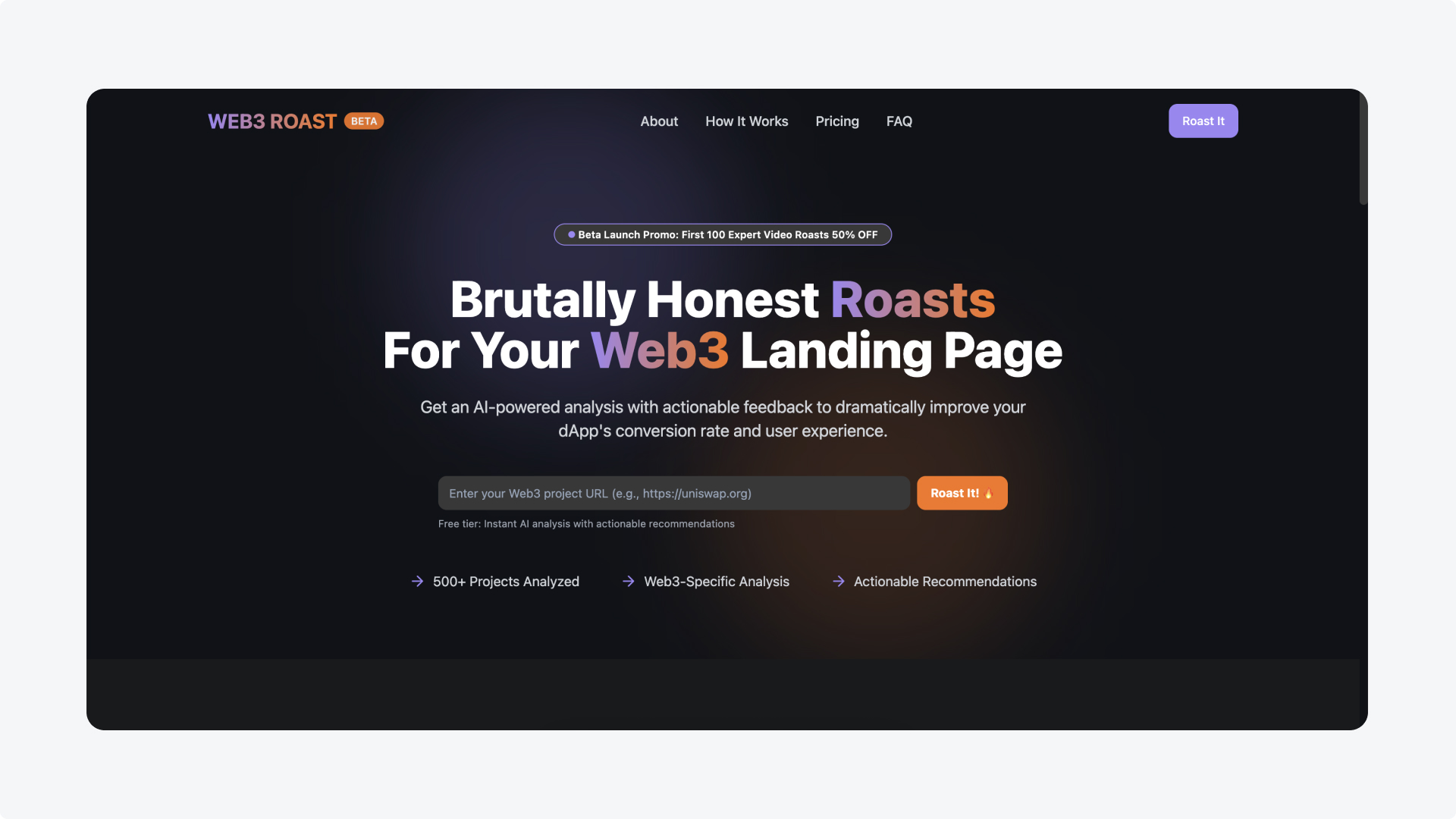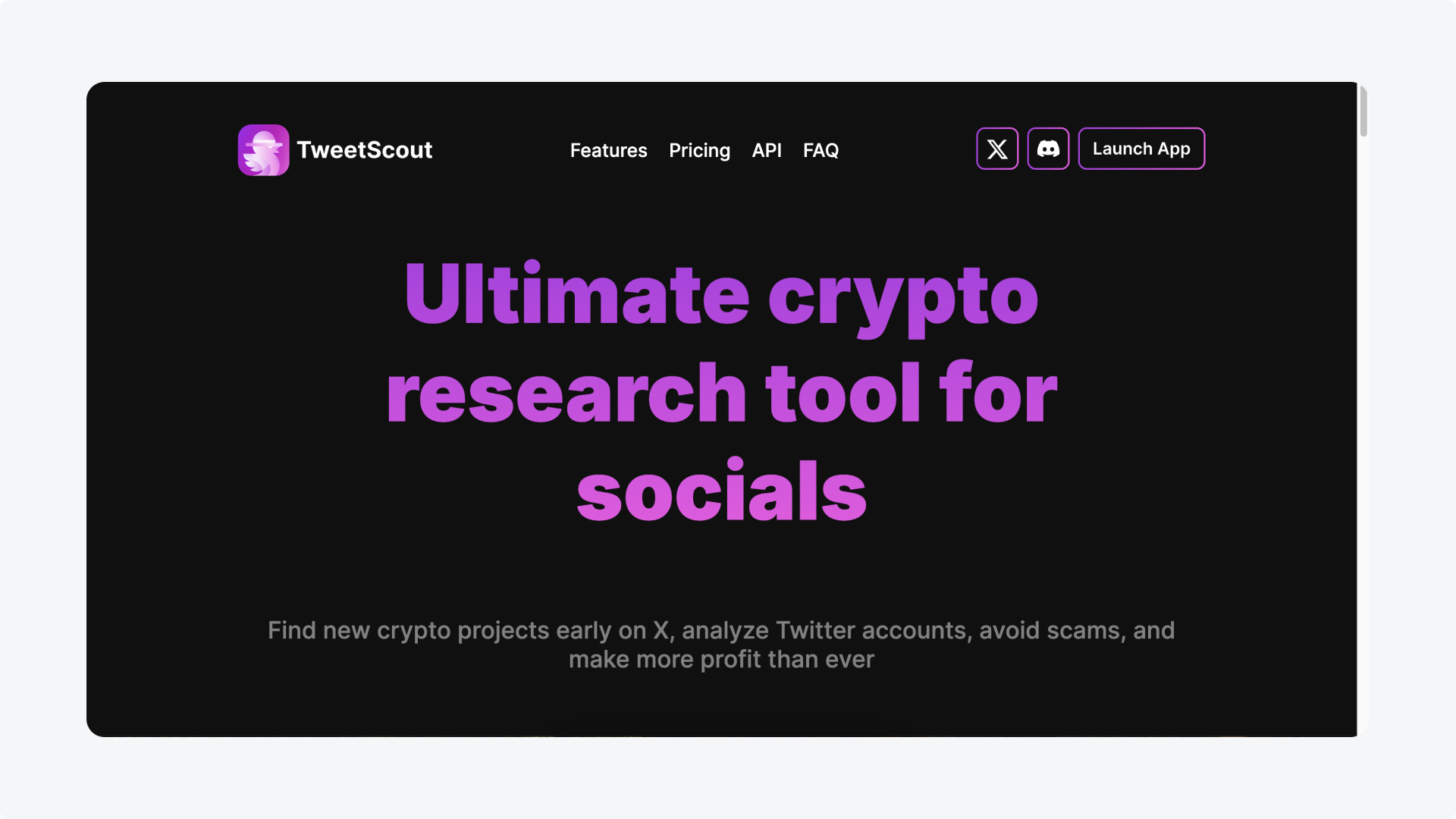Table of Contents
Community building in Web3 moves at lightning speed. Between planning airdrops, hosting Twitter Spaces, moderating Discord channels and executing referral campaigns, the workload can feel endless.
Thankfully, a new wave of AI‑powered tools is giving marketers and community managers superpowers. They automate repetitive tasks, scaling engagement, and surfacing insights that used to take hours to uncover.
I spent the last few weeks scouring Reddit threads, Twitter posts and industry blogs to uncover the most talked‑about tools in the space. Then, I took the top candidates for a spin. My goal was to identify which AI‑driven platforms actually make a difference for Web3 teams.
Free AI Tools
Every tool on this list offers either a free tier or trial, so you can experiment without pulling out the company wallet.
Instead of simply listing every product with a “Web3” label, I focused on real‑world utility. I evaluated them based on use‑case fit, pricing transparency, and community feedback.
Best AI Video & Content Repurposing Tools
Flowjin – AI video & audio soundbite tool
Flowjin automatically turns long Twitter Spaces to audio soundbites, or AMAs, Zoom calls or YouTube uploads into dozens of short, social‑ready clips. It adds captions, crops intelligently and even suggests different aspect ratios.
What I love: Once I uploaded a 45‑minute Twitter Space, Flowjin identified the key moments and cut them into ten attention‑grabbing soundbites without me lifting a finger. The captions looks polished and it can even pull speakers' info from Twitter to make a custom design.
It's also handy to repurpose branded video content into social copies, quotes and make better ROI of the content.
Downsides: It's not designed to clip narrative-based podcasts and works best with structured content; it also offers no permanent free tier.
Pricing: Trial available. Starter $19/mo (2.5h), Creator $29/mo (5h), Growth $135/mo (50h).
Best Web3 CRM & Community Automation Tools
Holder – Web3 CRM & automation
If your community spans Discord, Telegram and email, Holder acts as the glue holding everything together. The platform tags every wallet that interacts with your project, merges on‑chain and off‑chain data, then lets you send personalized messages based on behaviour. Think of it as HubSpot for Web3.
What I love: I appreciated the ability to segment DAO members by NFT traits and token holdings, then trigger automated email or Discord campaigns when they reach specific milestones. The built‑in forms make it easy to collect additional data without writing code.
Downsides: Holder recently announced that it’s sunsetting its main product, which may limit future support. Pricing is also on the higher side for small communities, and advanced automations require a paid tier.
Pricing: Plans start at $60/month (Creator) for 2,000 contacts, $300/month (Engagement) for 10,000 contacts, and custom pricing for enterprise. There’s no free plan.
Best Loyalty & Gamified Engagement Platforms
Galxe – Loyalty quests & airdrop automation
Galxe is best known for powering token‑gated quests and loyalty campaigns. Projects can build tasks (follow on X, stake tokens, join Discord) and reward participants with NFTs or points. The platform takes care of wallet verification, distribution and leaderboards.
What I love: Setting up a campaign feels like creating a Webflow form. You choose the tasks, define the reward (NFT badge, claimable token), and Galxe handles the claim page and on‑chain logic. It’s perfect for pre‑launch airdrops and post‑launch engagement.
Downsides: Galxe’s biggest draw, its claim system, can also be its biggest pain—non‑members pay claim fees unless they subscribe to Galxe+. Campaigns require gas funds, and designing attractive NFTs can be time‑consuming without a designer.
Pricing: The platform itself is free, but Galxe+ memberships unlock claim‑fee credits and gas subsidies. Mini costs $1.99/month, Premium is $22.21/month and Unlimited is $66.66/month.
Zealy (Crew3) – Gamified quest platform
Zealy (formerly Crew3) lets you gamify community engagement. Projects create “quests” for members like retweet this, submit an idea, answer a quiz, and reward them with XP. Leaderboards, badges and progress bars keep users coming back.
What I love: The onboarding was seamless. I created a test community, added quests with varying XP rewards and watched as users competed to climb the leaderboard. It’s an addictive way to turn marketing tasks into a game.
Downsides: Zealy doesn’t have an in‑house reward system; you’ll need to decide what XP converts into (tokens, NFTs, roles). Quest variety can feel limited if you don’t get creative. Some users may chase points without caring about quality.
Pricing: According to a recent BitDegree review, Zealy is “completely free to access and use”. Projects decide if they want to award NFTs or tokens separately, so there are no platform fees.
Best Web3 Analytics & Ad Targeting Tools
Cookie3 – Web3 marketing analytics
Cookie3 merges on‑chain and off‑chain data to give marketers a 360‑degree view of their audience. It tracks website visits, wallet activity, social engagements and campaign performance—without cookies. The AI layer suggests segmentation and helps filter out bots.
What I love: I connected a test dApp and immediately saw wallet segments like “first‑time minters,” “repeat buyers,” and “airdrop hunters.” Cookie3 also surfaced which marketing channels drove real wallets vs. bots, which is invaluable for optimizing spend.
Downsides: Setup requires a bit of technical knowledge (you’ll need to integrate their SDK). Pricing scales quickly as you add more wallets and websites. The free community tier offers limited insights.
Pricing: Paid plans start at $49/month for basic analytics and go up to $599/month for unlimited wallet analytics. Some community features are free, but full functionality requires a subscription.
Addressable – Wallet‑targeted advertising
Addressable bridges Web2 advertising and Web3 wallets. By matching wallets to hashed email and social data, it lets you run banner ads on mainstream websites that only show to wallet owners who meet your criteria (e.g., holders of a certain NFT).
What I love: The wallet‑aware targeting is eerily effective. I ran a small test campaign targeting wallets that interacted with a competitor’s smart contract and saw ad clicks from high‑value wallets at a fraction of typical CPC. You pay only when a wallet owner visits your site.
Downsides: Targeting requires you to upload wallet lists, which raises privacy questions. Ad creative must be Web2‑friendly, and budgets can run high if you’re not careful.
Pricing: Campaigns use a cost‑per‑wallet (CPW) model. According to Addressable, each wallet owner visit costs roughly $2–$8, depending on audience and inventory.
Best AI Social Listening & Trend Tools
Gro3 – AI social growth & trend alerts
Gro3 helps you stay on top of viral conversations and reply strategically. It scans thousands of tweets, Reddit posts and Telegram chats to surface trending topics in your niche. Its “ReplyRocket” feature suggests responses in your brand’s tone.
What I love: I set Gro3 to track DeFi key opinion leaders, and it pinged me when a major yield farm announced an update. The suggested replies were surprisingly on brand—saving me time and helping my responses stand out in crowded threads.
Downsides: Pricing is opaque; you need to book a demo to get exact numbers. The AI sometimes recommends jumping into conversations that aren’t relevant. It only monitors English‑language conversations for now.
Pricing: Gro3 offers a free trial, but pricing is only available via demo (typically reserved for growth teams). Expect a premium subscription, as the site positions itself as an enterprise tool.
Best Decentralized Publishing Tools
Mirror – Decentralized publishing & crowdfunding
Mirror is the go‑to platform for turning newsletters, essays and governance proposals into NFTs. Think of it as a crypto‑native Medium: you write articles, mint them as collectible editions, and your supporters can buy them. It’s ideal for project announcements and long‑form storytelling.
What I love: Writing on Mirror feels liberating. You own your content and can monetize without ads. I especially like the subscription mirror (similar to Substack) that lets you gate perks behind NFT ownership. It’s an excellent way to build community around your writing.
Downsides: Mirror isn’t a marketing automation tool, it’s a publishing platform. If you need analytics or email segmentation, you’ll need another tool. Also, minting NFTs requires gas if you operate outside Mirror’s L2.
Pricing: Publishing is free; when you sell an NFT, Mirror takes a 2.5% fee, and you keep 97.5% of the proceeds.
Best Portfolio Tracking & Networking Tools
DeBank – Portfolio tracker & social messaging
DeBank started as a DeFi portfolio tracker, covering over 116 chains and 3,300 protocols. Its new social layer lets you follow wallets, chat via the “Hi” feature, join channels and create quests. It’s like a crypto LinkedIn meets Blockfolio.
What I love: Being able to view a wallet’s positions and DM the owner is revolutionary for influencer outreach. I’ve used DeBank to reach NFT whales and discuss collaborations directly (no more DMs lost in spam). The quest system also gamifies engagement.
Downsides: Some social features are paywalled. Custom avatars, expanded follow limits and advanced analysis each cost a few dollars per month. Minting a Web3 ID costs $96. Support can be slow, and the interface can be overwhelming for beginners.
Pricing: Core portfolio tracking and messaging are free. Premium features (Time Machine, Transaction History Analysis, custom avatars) cost $3–$5 per month each, or $15/month for all features.
Best Email Marketing Tools
EmailOctopus – Email marketing for Web3
EmailOctopus isn’t Web3‑specific, but its Web3 customer templates and generous free plan make it a great fit for blockchain projects. The platform offers a drag‑and‑drop email builder, segmentation, automation and landing pages. It integrates with Zapier, so you can trigger emails when someone mints a token or completes a quest.
What I love: Setting up an onboarding sequence was painless. The template library gave me professional designs, and the automation builder let me send different emails based on whether a subscriber had a wallet connected or not. It’s a cost‑effective alternative to Mailchimp or Klaviyo.
Downsides: The free plan shows EmailOctopus branding on your emails, and support is limited. Some advanced features (like multi‑step automations) are capped on the free tier.
Pricing: There’s a free plan for up to 2,500 subscribers and 10,000 emails/month. The Pro plan starts at $12/month and removes branding while adding unlimited users and landing pages.
Best Conversion Optimization Tools
Web3 ROAST – AI CRO analysis

Web3 ROAST promises to “brutally” analyse your landing page and tell you why it’s not converting. You paste your site URL, and the AI spits out a report with UX and conversion suggestions. For deeper insights, you can book an expert video roast.
What I love: It took less than a minute to get my free audit. The feedback highlighted specific hero‑section issues and recommended a stronger call‑to‑action. It’s a quick way to get an objective look at your landing page without hiring a consultant.
Downsides: The free report is generic. To get personalised fixes, you’ll need the expert roast, which is expensive. The tool also focuses only on landing pages—there’s no support for dashboards or app flows.
Pricing: Instant AI audit is free. Expert Video Roast costs $299 (often discounted during beta).
Best Crypto Twitter Research Tools
TweetScout – Crypto Twitter research & KOL analysis

TweetScout aggregates crypto chatter across X (formerly Twitter) and ranks accounts by community quality. It lets you search for projects, influencers or keywords and see popularity scores, VC activity and scam warnings.
What I love: I used TweetScout to discover emerging meme coins and see which influencers were hyping them. The scoring system helped me differentiate real communities from bot‑inflated ones. The VC feed is great for tracking where big investors are spending attention.
Downsides: The UI feels cluttered, and the learning curve is steep. API access is sold separately, so if you want to integrate data into your own dashboards, you’ll pay extra.
Pricing: According to GetBlock’s marketplace, plans start at $29/month. Higher tiers unlock more searches and API access.




